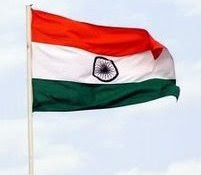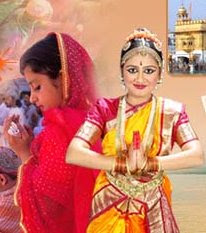Pancha Rathas is located at Mamallapuram, a small village in south side of Chennai city, in the state of Tamil Nadu, India. It means five chariots, named individually after Draupadi and the Pandava brothers. These 7th century shrines were carved during the reign of King Mamalla (Narasimahavarman I, after whom the site is named). Each temple is a monolith, carved, whole from an outcropping of rock. The temples are unfinished, and so were never consecrated or used for worship, although they have nothing to do with temple carts or the Mahabharata. The categorizations of the buildings are unfortunate. It would be better to call them vimanas and just number them 1 through 5, but the popular names have stuck.
 Architecture of Pancharatha
Architecture of Pancharatha
It is here that one sees architecture in action and every crucial stage of its evolutionary process. A closer look at the shrines will enable you to see how the artist carved each shrine out of the living rock, beginning from the top and working downwards. Chisel marking and unfurnished parts of the shrine add much to our admiration of the task of cutting the hard granite rock, from top to bottom, chip by chip, to fashion an entire temple. The square shrine has a simple peaked roof, simple to a thatched hut, with decorated corners. This roof design was never used again in southern Indian architecture but was transmuted into a miniature hut motif and placed at every horizontal level of subsequent rathas, and later temples, throughout the region.
The site gives the delightful impression of a city of life-size model buildings, whose variety of roofs, floor plans and columniation defines a veritable source book of south Indian temple forms. The architectural elements seen here will appear repeatedly, and with remarkable little variation, over the next 1000 years of temple building in south India.
Photo Gallery
 Yudhishtir's Ratha Photo
Yudhishtir's Ratha Photo
 Architecture of Pancharatha
Architecture of PancharathaIt is here that one sees architecture in action and every crucial stage of its evolutionary process. A closer look at the shrines will enable you to see how the artist carved each shrine out of the living rock, beginning from the top and working downwards. Chisel marking and unfurnished parts of the shrine add much to our admiration of the task of cutting the hard granite rock, from top to bottom, chip by chip, to fashion an entire temple. The square shrine has a simple peaked roof, simple to a thatched hut, with decorated corners. This roof design was never used again in southern Indian architecture but was transmuted into a miniature hut motif and placed at every horizontal level of subsequent rathas, and later temples, throughout the region.
The site gives the delightful impression of a city of life-size model buildings, whose variety of roofs, floor plans and columniation defines a veritable source book of south Indian temple forms. The architectural elements seen here will appear repeatedly, and with remarkable little variation, over the next 1000 years of temple building in south India.
Photo Gallery
 Yudhishtir's Ratha Photo
Yudhishtir's Ratha Photo Visitors at Panch Ratha, Mamallapuram
Visitors at Panch Ratha, Mamallapuram Pancha Rathas Pictures
Pancha Rathas Pictures  Pancha Rathas Images
Pancha Rathas Images Pancha Ratha at Mamallapuram
Pancha Ratha at Mamallapuram Pancha Ratha Photo
Pancha Ratha Photo Pancha Pandava's Ratha
Pancha Pandava's Ratha Pancha Pandava Ratha wallpaper
Pancha Pandava Ratha wallpaper Draupadi's Ratha
Draupadi's Ratha Bhima's Ratha Photo
Bhima's Ratha Photo A beatiful seen of Pancha Ratha
A beatiful seen of Pancha Ratha












2 comments:
Chennai is a good place to visit ,there are lots of temples, Beach etc,You can book Online Bus Ticket to visit there.
Post a Comment